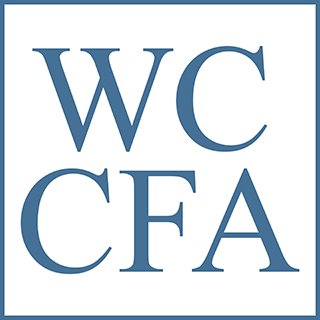Conservation Services
WCCFA provides museum-standards conservation treatment for paintings and painted surfaces. Each conservation treatment is thoroughly documented with photographs and written reports. Treatments are carried out using only approved museum-standards materials and methods.
Examination and Condition Assessment
Examination of artworks to determine condition and to provide treatment proposals and cost estimates.
Collection Maintenance
Consultation and planning on collection maintenance and environmental control, storage, handling, and shipping.
On-site Work
Conservation for non-transportable artworks.
Emergency Services
Assessment after flood, fire damage, etc., and the preservation of those collections.
Technical Analysis
Coordination and interpretation of technical materials analysis.
Outreach
Lectures, seminars, and workshops on art conservation including care and awareness training available to fine arts professionals, museum staff, and concerned individuals.
Collections & Surveys
On-site surveys of collections to assess the condition of specific artworks, the environment, storage and the general facility in order to prioritize conservation and preservation needs.
WCCFA works to provide clients with short and long-term conservation plans as well as provide cost-effective, museum standards conservation treatments in accordance with the Code of Ethics and Guidelines for Practice of the American Institute for the Conservation of Historic and Artistic Works.
Fee Structure
WCCFA provides its services at a per-hour rate, with special consideration to museums or other non-profit organizations and institutions. Insurance coverage is available. Please contact us for more information.
Our Standards
The American Institute for the Conservation of Historic and Artistic Works (AIC) has developed a Code of Ethics and Guidelines for Practice that each professional conservator must follow. This includes the level of training and professional development of a conservator, the quality and nature of the materials we use and the theory of reversibility, the degree and quality of the documentation we provide, as well as the nature of the treatment procedures allowable, among other things.
Conservation treatments are conducted only by a professional conservator. Each conservator is trained in the sciences as well as the history of art and artists; providing an understanding of material properties and artist materials which facilitate the capability to remain true to the artist’s original intent (the aesthetic and appearance that the original artist desired.)
Our management control system monitors each phase of a project in regard to schedule, budget, quality and performance. Close communication among client, conservator, appropriate historians and conservation scientists, as necessary; to ensure the successful execution of every project.
All services are carried out in accordance with the Code of Ethics and Guidelines for Practice of the American Institute for the Conservation of Historic and Artistic Works.







